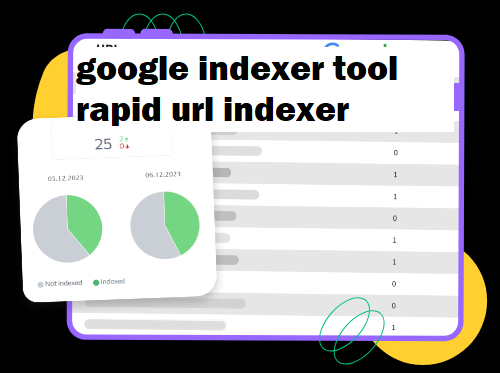In today’s fast-paced digital landscape, getting your content indexed on Google as quickly as possible is crucial for success. Whether you're launching a new website, publishing a blog post, or updating important pages, you want search engines like Google to pick up those changes rapidly. Google’s Indexer Tool (also known as Rapid URL Indexer) offers a solution to expedite this process. This article explains how it works, its importance, and the best practices for using it effectively.
What is Google’s Indexer Tool?
The google indexer tool rapid url indexer Tool is a feature within the Google Search Console that allows website owners, SEO specialists, and web developers to request the crawling and indexing of specific URLs. Normally, Google’s search engine bot (Googlebot) automatically crawls websites based on its own schedule, which could take days or even weeks for some new or updated pages to appear in search results. With the Indexer Tool, however, you can manually submit URLs to Google, prompting faster discovery.Importance of Rapid URL Indexing
Rapid URL indexing is vital for several reasons:- Faster Content Visibility: When you’ve added fresh content, or critical updates like price changes or event information, you want search engines to reflect this immediately. Faster indexing translates to faster traffic generation.
- Competitive Advantage: In highly competitive industries, being the first to have your new content appear in search results can make a big difference. Imagine a trending news article—indexing it first gives you a competitive edge.
- SEO Ranking Opportunities: Submitting URLs helps Google recognize and rank content changes or updates more swiftly. It ensures that important SEO optimizations are quickly factored into your rankings.
How to Use Google’s Indexer Tool for Rapid URL Indexing
Follow these steps to use Google’s Indexer Tool effectively:- Access Google Search Console: Log in to your Google Search Console account. If you haven’t set one up for your site, you’ll need to do that first. It’s a free tool that offers a range of features for monitoring website performance in Google search results.
- Inspect URL: In the Search Console, use the “URL Inspection Tool.” Enter the URL of the page you want to be indexed. This will allow you to see if the URL is already indexed or if there are any issues with the page (like errors or exclusions).
- Request Indexing: Once you’ve inspected the URL, if it’s not indexed, click on the “Request Indexing” button. Google will then put that URL in a queue for crawling and indexing.
- Wait for Indexing: While the tool is helpful, it’s important to remember that submitting a request doesn’t guarantee immediate indexing. Google may take a few hours or days depending on various factors such as the quality of the content and the site’s authority. However, using the tool significantly speeds up the process.
Best Practices for Effective Use
To get the most out of Google’s Indexer Tool, it’s important to follow certain best practices:- Submit High-Quality Content: Google prioritizes high-quality, informative, and relevant content. Ensure your URL meets Google's quality guidelines.
- Avoid Over-Submitting: While it’s tempting to submit URLs frequently, overuse of the tool may not yield better results. Google will still prioritize URLs based on relevance, site structure, and authority, so use the tool selectively.
- Ensure Pages are Search Engine Friendly: Before submitting a URL, ensure it’s optimized for search engines—this includes having proper title tags, meta descriptions, and no technical issues (like 404 errors or slow loading times).
- Update Sitemaps: Although the Indexer Tool helps with individual pages, having an updated sitemap is equally important. Regularly submitting your sitemap to Google ensures that all pages on your site are discoverable.
Limitations of Google’s Indexer Tool
While Google’s Indexer Tool is helpful for rapid URL indexing, it has limitations:- Manual Submissions Only: The tool is designed for manual submissions, meaning it’s not ideal for bulk submission of URLs.
- No Guarantee of Immediate Ranking: Just because a URL is indexed quickly doesn’t mean it will rank highly. SEO best practices like quality content, link-building, and user engagement still play a major role.
- Not a Replacement for Organic Crawling: Googlebot will still naturally crawl your website over time, so the Indexer Tool should be seen as a way to augment, rather than replace, organic crawling.


